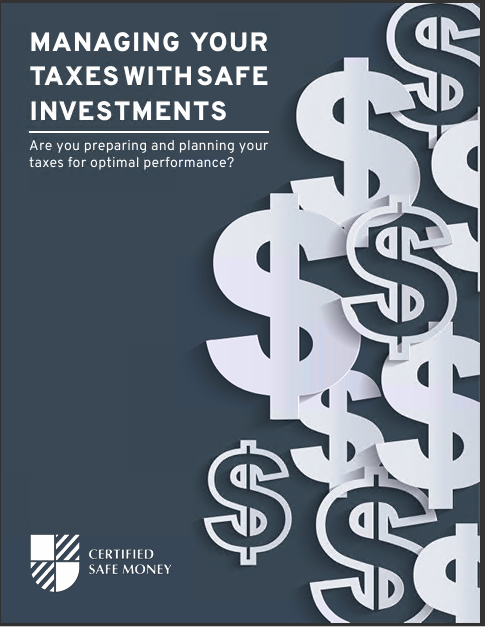Investing for Retirement: Balancing Risk and Reward
Key Takeaways:
- Prioritize capital preservation with low-risk investments like Treasury bonds and dividend-paying stocks.
- Explore guaranteed income products like annuities to protect against market downturns and longevity risk.
In today’s dynamic financial landscape, planning for retirement involves a careful balance between risk and reward. As individuals approach their retirement years, the need to preserve capital while also generating sufficient returns becomes paramount. This article explores the various aspects of investing for retirement, delving into strategies, options, and considerations to help individuals navigate this critical phase of their financial journey.
What are the best investment options for retirement?
When considering investment options for retirement, it’s essential to prioritize stability, growth potential, and diversification. Here are some key investment vehicles to consider:
Retirement Funds:
Retirement funds, such as 401(k)s and IRAs, offer tax advantages and a range of investment options. These funds typically include a mix of stocks, bonds, and other assets, providing diversification to mitigate risk.
Retirement funds serve as the cornerstone of many individuals’ retirement savings strategies. With features like employer matching contributions and tax-deferred growth, 401(k)s offer an attractive option for long-term retirement investing. Similarly, Individual Retirement Accounts (IRAs) provide individuals with additional tax benefits and investment flexibility.
Within retirement funds, investors can choose from a variety of investment options, including mutual funds, target-date funds, and self-directed brokerage accounts. Each option offers varying levels of risk and potential return, allowing investors to tailor their portfolios to their risk tolerance and investment objectives.
Diversified Portfolios:
Diversification is crucial in retirement investing to spread risk across various asset classes. A well-balanced portfolio may include stocks, bonds, real estate, and alternative investments to capture growth while minimizing volatility.
A diversified portfolio helps mitigate risk by reducing exposure to any single asset class or investment. By spreading investments across different sectors and asset types, investors can minimize the impact of market fluctuations on their overall portfolio performance.
In constructing a diversified portfolio, investors should consider their risk tolerance, time horizon, and investment goals. For example, younger investors with a longer time horizon may have a higher allocation to stocks for growth potential, while retirees may favor more conservative investments like bonds and cash equivalents for capital preservation.
Low-Risk Investments:
For those nearing retirement, capital preservation becomes a primary concern. Low-risk investments, such as Treasury bonds, certificates of deposit (CDs), and money market funds, offer stability and steady income.
Low-risk investments serve as a valuable component of a retirement portfolio, providing a cushion against market volatility and preserving capital during economic downturns. While these investments may offer lower returns compared to riskier assets like stocks, they provide peace of mind and stability, particularly for retirees reliant on their investment income.
Treasury bonds, issued by the U.S. government, are considered one of the safest investments available, backed by the full faith and credit of the government. These bonds offer fixed interest payments and return of principal upon maturity, making them a popular choice for risk-averse investors seeking steady income.
Certificates of deposit (CDs) are another low-risk investment option that offers a guaranteed return over a specified period. With fixed interest rates and FDIC insurance protection, CDs provide a secure way to earn a predictable income stream while preserving principal.
Money market funds invest in short-term, high-quality debt securities, such as Treasury bills and commercial paper, offering liquidity and stability. While money market funds may provide slightly higher returns than traditional savings accounts, they remain a low-risk option for investors seeking capital preservation and liquidity.
How should I invest for retirement?
Investing for retirement requires careful planning and consideration of individual goals, risk tolerance, and time horizon. Here’s a step-by-step approach to retirement investing:
Assess Your Risk Tolerance:
Before constructing a retirement portfolio, assess your risk tolerance to determine your comfort level with market fluctuations. Consider factors such as age, financial obligations, and investment objectives.
Determining your risk tolerance is a critical first step in designing a retirement investment strategy that aligns with your goals and preferences. Risk tolerance reflects your ability and willingness to withstand fluctuations in the value of your investments, and it plays a significant role in shaping your asset allocation decisions.
Various tools and questionnaires are available to help investors assess their risk tolerance, taking into account factors such as investment experience, time horizon, and financial goals. By understanding your risk tolerance, you can construct a portfolio that strikes the right balance between risk and return, tailored to your individual needs.
Define Your Investment Goals:
Clearly define your retirement goals, including desired income level, lifestyle preferences, and retirement age. Your investment strategy should align with these objectives to ensure a tailored approach.
Setting specific, measurable, and achievable retirement goals is essential for guiding your investment decisions and monitoring your progress over time. Whether your goal is to travel the world in retirement, purchase a second home, or leave a legacy for future generations, articulating your aspirations provides clarity and direction for your investment strategy.
Consider factors such as your anticipated retirement expenses, expected longevity, and inflation when setting your investment goals. By quantifying your objectives and establishing a timeline for achieving them, you can develop a strategic investment plan that maximizes your chances of success and financial security in retirement.
Create a Diversified Portfolio:
Construct a diversified portfolio that spreads risk across different asset classes and investment vehicles. Allocate assets based on your risk tolerance, time horizon, and investment goals, rebalancing periodically to maintain alignment.
Diversification is a fundamental principle of investing that seeks to reduce risk by spreading investments across a variety of asset classes, industries, and geographical regions. By diversifying your portfolio, you can potentially improve returns while minimizing the impact of any single investment’s performance on your overall portfolio.
A diversified portfolio typically includes a mix of stocks, bonds, cash equivalents, and alternative investments, each serving a unique role in achieving your investment objectives. The optimal asset allocation depends on factors such as your risk tolerance, investment horizon, and financial goals, with adjustments made over time to adapt to changing market conditions and life circumstances.
What is the safest way to invest for retirement?
Safety is a top priority for retirees seeking to protect their nest egg. While no investment is entirely risk-free, certain strategies can help minimize risk:
Focus on Capital Preservation:
Prioritize investments that prioritize capital preservation, such as high-quality bonds, dividend-paying stocks, and cash equivalents. These assets offer stability and income generation, reducing exposure to market volatility.
Capital preservation is particularly important for retirees who rely on their investment income to cover living expenses and support their lifestyle in retirement. By prioritizing investments with a focus on preserving capital, retirees can mitigate the risk of significant losses and ensure the sustainability of their retirement income stream over time.
High-quality bonds, including Treasury bonds and investment-grade corporate bonds, are renowned for their safety and income-generating potential. These bonds offer fixed interest payments and return of principal upon maturity, providing a reliable source of income for retirees while preserving capital.
Dividend-paying stocks represent another avenue for capital preservation and income generation in retirement. Companies with a history of stable dividends and strong cash flows can provide shareholders with a steady stream of income, making them an attractive option for retirees seeking to supplement their retirement income while preserving capital.
Cash equivalents, such as money market funds and short-term certificates of deposit (CDs), offer liquidity and stability, allowing retirees to access funds quickly and without the risk of significant loss. While these investments may offer lower returns compared to stocks and bonds, they provide essential liquidity and capital preservation benefits, particularly in volatile market environments.
Consider Guaranteed Income Products:
Explore guaranteed income products, such as annuities, that provide a steady stream of income throughout retirement. Annuities offer protection against market downturns and longevity risk, providing peace of mind for retirees.
Annuities are insurance products designed to provide a reliable income stream for retirees, typically through periodic payments that last for the duration of their lives or a specified period. With features like guaranteed minimum withdrawal benefits and income riders, annuities offer retirees protection against market volatility and the risk of outliving their savings.
There are several types of annuities available, including immediate annuities, deferred annuities, and variable annuities, each offering different features and benefits. Immediate annuities provide an immediate income stream in exchange for a lump-sum payment, while deferred annuities allow retirees to defer payments until a later date, typically when they retire.
Variable annuities offer investment options that allow retirees to participate in the potential growth of the market while providing downside protection through guaranteed minimum withdrawal benefits and death benefits. These annuities offer flexibility and customization options, allowing retirees to tailor their income stream to their individual needs and preferences.
Stay Mindful of Fees:
Be mindful of investment fees and expenses, as they can eat into your returns over time. Opt for low-cost investment options, such as index funds and ETFs, to minimize expenses and maximize long-term growth potential.
Investment fees and expenses can significantly impact your overall investment returns, reducing the amount of money available for growth and income in retirement. Common fees include management fees, administrative expenses, and sales charges, all of which can erode your portfolio’s value over time if left unchecked.
To minimize the impact of fees on your retirement savings, consider investing in low-cost investment options, such as index funds and exchange-traded funds (ETFs), which offer broad market exposure at a fraction of the cost of actively managed funds. These passively managed investment vehicles seek to replicate the performance of a market index, such as the S&P 500, with minimal turnover and lower expenses.
Another cost-effective option for retirement investors is to work with a fee-only financial advisor who charges a transparent, flat fee for their services rather than earning commissions on investment products. By aligning your interests with those of your advisor and minimizing conflicts of interest, you can ensure that your retirement investments are managed in a cost-effective and efficient manner, maximizing your chances of achieving your long-term financial goals.
In conclusion, investing for retirement requires a balanced approach that considers both risk and reward. By diversifying your portfolio, aligning investments with your goals, and prioritizing safety, you can build a resilient retirement strategy that withstands market fluctuations and supports your financial security in the years ahead.
Contact Information:
Email: [email protected]
Phone: 5613285961
Bio:
Erik Ranberg, Certified Federal Retirement Consultant (FRC℠) and Marine Veteran, has a unique ability
to cut through the “fancy speak” and help you understand the complexity of your Federal Benefits. Erik
has over 20 years of experience in the retirement arena assisting public servants at the Federal, State,
Municipal and Educator levels. Erik assists Federal Employees complete their retirement and disability
applications, provides guidance to project and plan retirement income, establish multi-pension/income
streams, and avoid the tax traps that many retirees often fall victim to. Whether you become a client or
not, you will walk away with a thorough, clear, and easy to understand knowledge with respect to your
individual retirement wishes. Erik’s unique background which includes the US Marines, the utility
construction industry and then financial services provides a “no pressure, nothing to sell you” common
sense approach you will enjoy.













